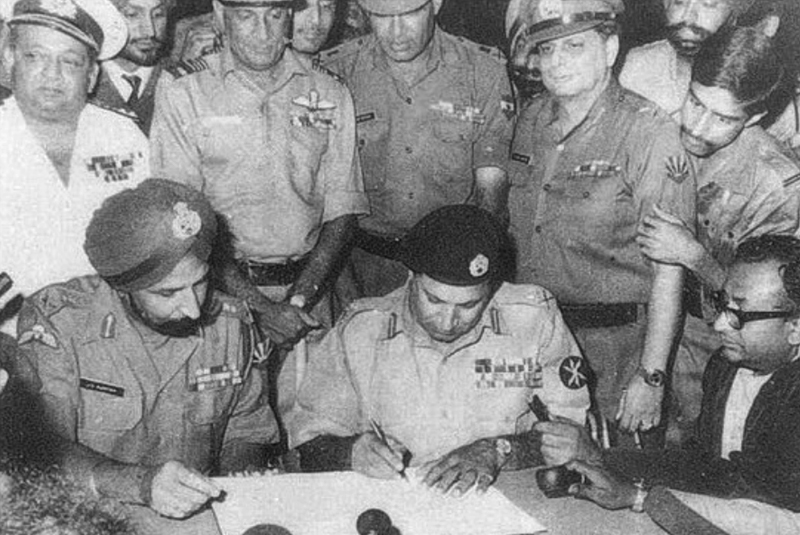The year was 1971. I was just completing my school, and I remember we were very proud of India’s Prime Minister Mrs Indira Gandhi, our brave soldiers and Generals. We heard many stories of the Indian Military’s exceptional bravery, and I wished to be a part of them – somehow.
I felt a great sense of pride when Lt. General AAK Niyazi surrendered with his 93000 odd forces to Lt. General Jagjit Singh Arora and also when Gen Sangat Singh took over Dacca in an exceptional manoeuvre. Recently, we celebrated the Vijay Divas, the golden jubilee of the most significant event in Independent India’s diplomatic-military saga.
Felicitations to our friends in Bangladesh for their indomitable courage and for converting their aspirations into a reality. It also taught us that a cultural connection is stronger than political and religious divergence.
My impressions are based on my readings and my experience. I was posted in Bangladesh–from 1986-1989–in the Indian High Commission during the reign of President Ershad. During my time in Bangladesh, I met Sheikh Hasina and her husband, Tiger Siddique (Abdul Kader Siddique), a number of Mukti Bahini fighters and members of the resistance, many of whom became my friends.
-30-
Copyright©Madras Courier, All Rights Reserved. You may share using our article tools. Please don't cut articles from madrascourier.com and redistribute by email, post to the web, mobile phone or social media.Please send in your feed back and comments to editor@madrascourier.com











